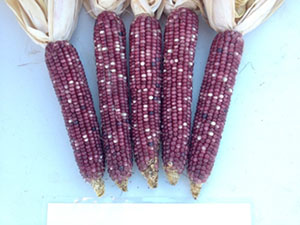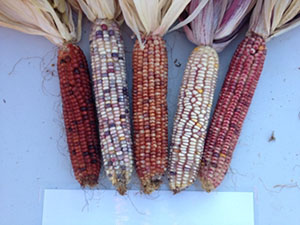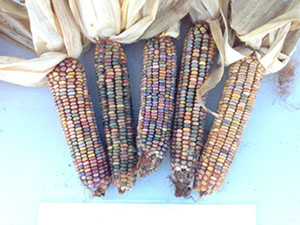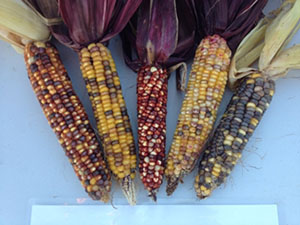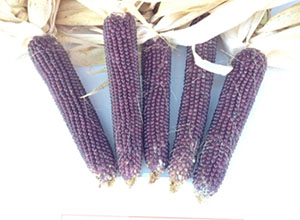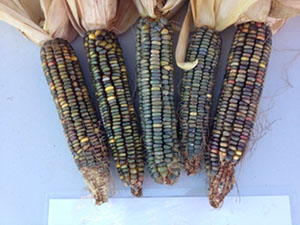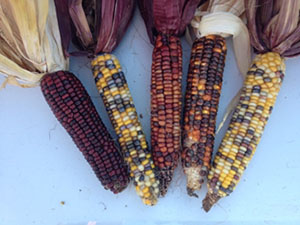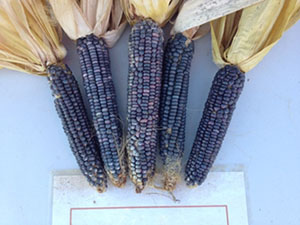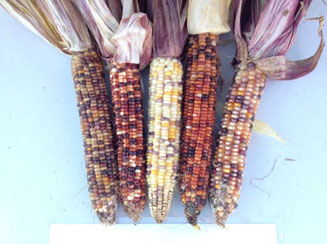Address any questions or comments regarding this newsletter to the individual authors listed after each article or to its editors, Nathan Johanning, 618-939-3434, njohann@illinois.edu or Bronwyn Aly 618-695-6060, baly@illinois.edu. The Illinois Fruit and Vegetable News is available on the web at: http://ipm.illinois.edu/ifvn/. To receive or be removed from email notification of new postings of this newsletter, contact Nathan Johanning or Bronwyn Aly at the phone numbers or email addresses above.
In This Issue:
Upcoming Programs (listings for beginning and established growers)
Regional Reports (north-central, southern Illinois)
Fruit and Vegetable Production and Pest Management (Cover Crop Highlight, 2016 Southern Illinois Ornamental Corn Variety Trial)
Upcoming Programs
Check the Illinois SARE calendar for a full list of programs and links for registration.
http://illinoissare.org/ and http://illinoissare.org/calendar.php
Also see the University of Illinois Extension Local Food Systems and Small Farms Team's website at:
http://web.extension.illinois.edu/smallfarm/ and the calendar of events at http://web.extension.illinois.edu/units/calendar.cfm?UnitID=629.
- 2017 Illiana Vegetable Growers Symposium, Tuesday, January 5, 8:00 a.m. – 4:00 p.m. CST, Teibel's Restaurant, Schererville, IN. The program is packed full of useful information for vegetable growers. See the complete program and registration form at http://tinyurl.com/ivgs2017. Advance registration is $30 per person. To register, visit www.edustore.purdue.edu and look for the 'Workshops' button on the left of the page. Online registration is due by noon Dec. 22. To register by mail, send a completed registration form with payment postmarked by Dec. 16. On-site registrations will be accepted at $35 per person, but the famous Teibel's fried chicken luncheon cannot be guaranteed. For more information, contact Nikky Witkowski at Purdue Extension-Lake County: (219) 755-3240 or nikky@purdue.edu.
- Illinois Specialty Crops, Agritourism, and Organics Conference, January 11-13, 2017. Crowne Plaza Hotel, Springfield, IL. The conference, which features nearly 100 speakers and 60 trade show exhibitors, will again host four concurrent pre-conference workshops, general sessions, and breakout sessions aimed at helping Illinois specialty growers cultivate their operations
Wednesday Pre-conference Workshops:- Cover Crops, Nutrient Management and Soil Health
- Digital Marketing Strategies for Your Farm
- Growing and Marketing Tomatoes and Peppers
- Designing, Operating Irrigation Systems for Illinois Vegetable and Fruit Crops
- NCR-SARE Farmers Forum program
General Sessions Topics:- Agritourism and Marketing
- Fruits
- Vegetables
- Herbs
- Organic Foods
- Emerging Issues and Opportunities
For the first time, conference registration will be offered online. A detailed conference agenda, registration, and cider contest information can be viewed at www.specialtygrowers.org. To receive registration materials or to obtain exhibitor information, please contact Charlene Blary at 309-557-2107 or cblary@ilfb.org. - 2017 Small Farms Winter Webinar Series, every Thursday from noon to 1:00 p.m. from January 19 – March 30, 2017. It's easy (and FREE!) to register for the Small Farms Winter Webinars. Sign up for as many as you want at http://go.aces.illinois.edu/winterwebinars2017. We'll send you a webinar reminder, log-on instructions, and how to access the archived recording. If you do not have broadband internet capable of streaming video, call your local Extension office to see if they can offer live viewing. For more information, contact: Andy Larson, University of Illinois Extension, Local Food Systems and Small Farms Educator at 815-732-2191 or andylars@illinois.edu
- Jan. 19 - ABCs of Strawberry Plasticulture Production, Bronwyn Aly, University of Illinois Extension Local Food Systems and Small Farms Educator
- Jan. 26 - Buying Hay: Quality vs. Cost, Jamie Washburn, University of Illinois Extension Local Food Systems and Small Farms Educator
- Feb. 2 - Slow Flowers: Small-Scale Cut Flower Production, Candice Hart, University of Illinois Extension Horticulture Educator
- Feb. 9 - Out with the Old: Pruning Old and Neglected Fruit Trees, Grant McCarty, University of Illinois Extension Local Food Systems and Small Farms Educator
- Feb. 16 - Small Commercial Microgreen Production, Zack Grant, University of Illinois Extension Local Food Systems and Small Farms Educator
- Feb. 23 - Food Safety Needs for Midwest Produce Growers, Dr. Angela Shaw, Iowa State University Extension and Outreach Food Safety Specialist
- Mar. 2 - Growing Your Hobby Farm into a Business, Andy Larson, University of Illinois Extension Local Food Systems and Small Farms Educator
- Mar. 9 - Do Your Bees Have PMS (Parasitic Mite Syndrome)?, Doug Gucker, University of Illinois Extension Local Food Systems and Small Farms Educator
- Mar. 16 - Maximizing Windbreaks on Your Farm, David Shiley, University of Illinois Extension Local Food Systems and Small Farms Educator
- Mar. 23 - Benefits of Mulching Vegetables, James Theuri, University of Illinois Extension Local Food Systems and Small Farms Educator
- Mar. 30 - Soil Management for High Tunnels, Nathan Johanning, University of Illinois Extension Local Food Systems and Small Farms Educator
- Horseradish Growers Convention, Madison-Monroe-St Clair Extension Branch Office, Collinsville, IL, January 26, 2017. For more information, contact Elizabeth Wahle, University of Illinois Extension, Horticulture Educator at 618-344-4230 or wahle@illinois.edu.
- 2017 Commercial Tree Fruit Schools, Mt. Vernon & Hardin, IL, February 7 & 8, 2017. For current research-based information on growing tree fruits, attend the 2017 Tree Fruit School. This program features a wide range of topics to help you meet the challenges of commercial fruit production in Southern and Southwestern Illinois. The school will cover key orchard management topics as well as other production issues. Industry representatives will also be on hand to talk about their latest products and services.
Registration starts at 8:00am with programs beginning at 8:30am for both schools, adjourning around 4:30pm.
Advanced registration is required by January 24, 2017 Registration information and agenda can be found at: http://web.extension.illinois.edu/units/event.cfm?UnitID=629&EventID=73703. For more information, contact Laurie George University of Illinois Extension, Local Food Systems and Small Farms Educator at 618-548-1446 or ljgeorge@illinois.edu. - Market Manager Certificate Program
LOCATION: University of Illinois Extension Office 4618 Broadway Mt. Vernon, Illinois 62864
IN-PERSON SESSIONS: February 10, 11, and March 11, 2017
WEBINARS: February 13, 15, 17, 20, 22, 27, March 1, 2017
This is a voluntary program that was created to encourage farmers market managers to pursue leadership skills and professional development on topics essential to market management. Hosted by the Michigan Farmers Market Association and the Illinois Farmers Market Association. Additional information and registration can be found at: http://mifma.org/mmcp/ - Stateline Fruit and Vegetable Conference, Rockford, IL, February 13, 2017. For more information, contact Grant McCarty University of Illinois Extension, Local Food Systems and Small Farms Educator at 815-235-4125 or gmccarty@illinois.edu.
- Gateway Small Fruit and Vegetable Conference, Regency Conference Center O'Fallon, IL, February 15, 2017. For more information, contact Elizabeth Wahle, University of Illinois Extension, Horticulture Educator at 618-344-4230 or wahle@illinois.edu
- Illinois Grape Growers and Vintners Association Winter Wine Festival and Annual Conference Crowne Plaza Springfield, IL, February 24-25, 2017. For more information, contact Elizabeth Wahle, University of Illinois Extension, Horticulture Educator at 618-344-4230 or wahle@illinois.edu
Regional Reports
From north-central Illinois…With a high of 3 degrees Fahrenheit last Sunday, it is a safe bet to say it is cold outside. I've noted many growers are sold out of their cool season crops like spinach and kale. Hopefully, that's the lack of fresh cool season veggies is from overwhelming need and not due to crop failure or killing cold temperatures. During my most recent visit to a local vegetable farm, it was cold enough that upon seeing a closed barn door and a sign that read "sold out," I didn't stick around to ask questions.
Make sure you have your irrigation lines properly drained and stored. Two years ago, I disconnected my systems and set the backflow preventer and filter on my worktable in the high tunnel. Thinking a vigorous shake and propping the fixtures on end would rid them of water. Come spring I found my filter had a telltale crack where water had remained and frozen. This year my irrigation fixtures were brought inside, and all valves opened to drain the lines.
If you participate in farmers' markets, it is always beneficial to attend meetings of market organizers to retrospect on the year and plan for the next growing season. At a previous meeting, we brainstormed ideas for getting more customers to the market. Next year, our local Extension staff and volunteers will play a role in providing booths with educational activities for the young and old. Should be a fun market year.
Chris Enroth (309-837-3939; cenroth@illinois.edu)
From southern Illinois ... The last month has been a little more "normal" if there is such a thing. Although we have still had a few warm days, we have been at or below average for our temperatures especially in the last week or so. Here in Murphysboro, the first of this week has been the coldest we have seen so far this season with highs in the mid-20s and Monday morning we were down into the single digits. Down here we dodged most of the ice and had mainly rain over the weekend, but the St. Louis Metro East area got hit hard with the ice and freezing rain. This was mainly problematic for traffic and not enough to cause any damage to fruit trees or other perennial crops or structures. We have had typical precipitation with a couple of systems bringing us some timely rains after what was a dry stretch in late October and early November. Looking ahead the middle of this week through Christmas shows us warming up above freezing and by Sunday up to around 60.
Out in the field growers were still working on fall cleanup, pulling up old plasticulture beds and pulling posts from trellised vegetables. For a while it was almost too dry to do some of these things easily so with some rains in mid-November there was a good chance to work on these things before the ground froze. Most any fall crop that had not been under some form of protection has succumbed to the cold.
In our high tunnel at the office in Jackson County the carrots and greens are looking fine with the help of the row cover. The broccoli we have it just starting to form heads and even with the row cover many of the older leaves have been injured by cold; however, the new head and younger leaves still look alright. Hopefully, with some more moderate winter time weather there is still potential for the broccoli to be productive.
I just wanted to thank all of our readers for their continued support and readership now that Bronwyn and I have completed one year as co-editors of the newsletter. We hope to continue bringing you just as much information as we can to help you in your operation! Merry Christmas and hope to see many of you at the Illinois Specialty Crops Conference in Springfield!
Nathan Johanning (618-939-3434; njohann@illinois.edu)
Fruit and Vegetable Production and Pest Management
Cover Crop Highlight: What's Going on Out in the Field
 By now most of our cover crop have gone dormant or have been terminated by the cold, but what have they done for us by now? Here are just a few notes and observations I wanted to share what we are seeing out in the field from our cover crops. It is important to take a little extra time (and maybe a shovel) to scout cover crops and see what is going on.
By now most of our cover crop have gone dormant or have been terminated by the cold, but what have they done for us by now? Here are just a few notes and observations I wanted to share what we are seeing out in the field from our cover crops. It is important to take a little extra time (and maybe a shovel) to scout cover crops and see what is going on.
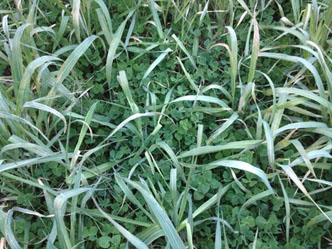
Above is a picture of an oat/crimson clover mix (as of 12/11/16) seeded in early September with a no-till drill at 25 lbs oats; 8 lbs clover/A. This variety of crimson clover is 'Kentucky Pride' which is a newer variety which has shown to do well in southern Illinois. The picture to the right shows the root growth from the last 3 months. Crimson clover does have a tap root, but also many fine fibrous hair roots which penetrate and loosen the soil. Also, you can see the start of some small white nodules forming on the roots as the start of nitrogen production for the plant.
The picture below (left) show how much the clover has tillered and branched with its fall growth. With adequate growth in the fall crimson clover branches similar to branch crowns on strawberries. These additional tillers will allow for more blooms and foliage growth in the spring.
In contrast, the picture below (right) shows the root system from the oats. The roots are very fibrous and extensive. This gives oats a great potential to reduce erosion and also build the soil. The oats will winter-kill with multiple days of temperatures below 20, but the fibrous root system will still remain throughout the winter giving additional stability to your soil. When you compare the root systems of these two cover crops you can see how they can work together very well in the soil.
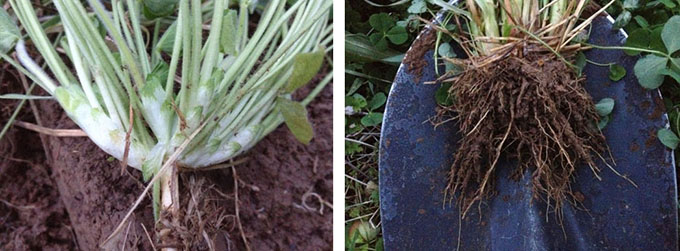
Below is from a local grower field where sorghum-sudangrass (brown stems in the picture) was planted in the summer and mowed and then cereal rye was drilled directly into the the sorghum-sudangrass in October. Once we had a freeze the sorghum-sudangrass died, opening up the canopy for this healthy stand of cereal rye to take off. This is a form of relay planting where one is seeded into another living crop. Both of these species are very competitive with weeds which was one of the goals behind the selection of these cover crops by the grower. This field will be no-till planted into summer squash, cucumbers, or green beans next growing season.
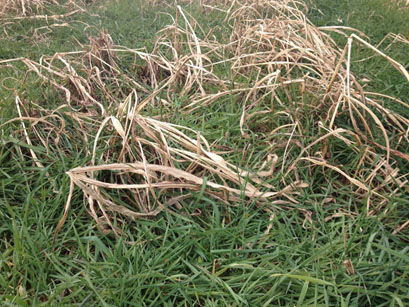
All photos: N. Johanning
Here is just a little look at some of the things these cover crops are doing for us even at a time when we aren't spending as much time in the field.
Nathan Johanning (618-939-3434; njohann@illinois.edu)
2016 Southern Illinois Ornamental Corn Variety Trial
An observational ornamental corn variety trial was planted in southern Illinois at the Ewing Demonstration Center, Ewing, IL as a compliment to pumpkin trials featured during the annual Illinois Pumpkin Field Day held August 31, 2016. The ornamental corn trial consisted of 12 varieties (see Table 1) planted on May 31, 2016. The plots were planted 1" deep using a no-till planter set on 30" rows at a population rate 20,000 seeds/acre. Production practices were followed using recommendations from the University of Kentucky Center for Crop Diversification crop profile Ornamental Corn http://www.uky.edu/Ag/CCD/introsheets/orncorn.pdf. Due to above average rainfall during much of the 2016 growing season, pesticide applications for weed and insect control were difficult to make, resulting in only one application for corn earworm. Corn earworm damage along with poor tip fill/pollination had a negative effect on the number of marketable ears harvested from the trial. The table below provides variety trial results listed in descending order of Marketable Ears. Photos of each variety with comments are listed below the table. Harvest data collected September, 13, 2016.
We would like to thank the following companies for generously donating seed for this variety trial: Johnny's Selected Seeds, Rispens Seeds, Rupp Seeds, & Seedway.
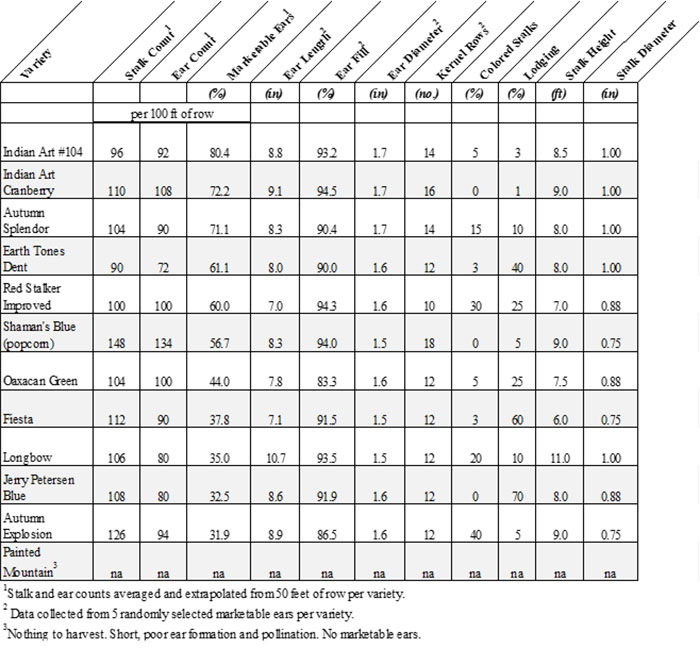
|
|
|
|
|
|
|
|
|
|
|
|
Nathan Johanning (618-939-3434; njohann@illinois.edu) and Bronwyn Aly (618-382-2662; baly@illinois.edu)
Less Seriously...
Witty and Occasionally Astute Observations
http://www.carolhansengrey.com/Quotes/Humor.html
-by Winston Churchill
"He has all the virtues I dislike and none of the vices I admire."
"He's a modest little person, with much to be modest about."
"We are masters of the unsaid words, but slaves of those we let slip out"
"Courage is what it takes to stand up and speak; courage is also what it takes to sit down and listen."
"There are a terrible lot of lies going about the world, and the worst of it is that half of them are true."
"Courage is going from failure to failure without losing enthusiasm."
"A pessimist sees the difficulty in every opportunity; an optimist sees the opportunity in every difficulty."
"If this is a blessing, it is certainly very well disguised."
"Attitude is a little thing that makes a big difference."
"Difficulties mastered are opportunities won"
"To jaw-jaw- is always better than to war-war"
"I never worry about action, but only about inaction"
"There is no such thing as public opinion. There is only published opinion."
"It is a mistake to look too far ahead. Only one link in the chain of destiny can be handled at a time."
"Healthy citizens are the greatest asset any country can have"
"Without courage all virtues lose their meaning."
"Criticism may not be agreeable, but it is necessary. It fulfills the same function as pain in the human body. It calls attention to an unhealthy state of things."
"Never hold discussions with the monkey when the organ grinder is in the room."
"A man is about as big as the things that make him angry"
"Success is not final, failure is not fatal: it is the courage to continue that counts."
"The rule which forbids ending a sentence with a preposition is the kind of nonsense up with which I will not put."
"It is my belief, you cannot deal with the most serious things in the world unless you understand the most amusing"
"The first quality that is needed is audacity."
"A fanatic is one who can't change his mind and won't change the subject."
"We make a living by what we get, but we make a life by what we give."
"By swallowing evil words unsaid, no one has ever harmed his stomach."
"However beautiful the strategy, you should occasionally look at the results."
"You can always count on Americans to do the right thing - after they've tried everything else."
"I always avoid prophesying beforehand, because it is a much better policy to prophesy after the event has already taken place."
"A lie gets halfway around the world before the truth has a chance to get its pants on."
University of Illinois Extension Specialists in Fruit and Vegetable Production & Pest Management
Extension Educators – Local Food Systems and Small Farms |
||
Bronwyn Aly, Gallatin, Hamilton, Hardin, Pope, Saline, and White counties |
618-382-2662 |
|
Katie Bell, Franklin, Jackson, Perry, Randolph, & Williamson counties |
618-687-1727 |
|
Sarah Farley, Lake & McHenry counties |
847-223-8627 |
|
Nick Frillman, Woodford, Livingston, & McLean counties |
309-663-8306 |
|
Laurie George, Bond, Clinton, Jefferson, Marion, & Washington counties |
618-548-1446 |
|
Zachary Grant, Cook County | 708-679-6889 | |
Doug Gucker, DeWitt, Macon, and Piatt counties |
217-877-6042 |
|
Erin Harper, Champaign, Ford, Iroquois, and Vermillion counties |
217-333-7672 |
|
Grace Margherio, Jackie Joyner-Kersee Center, St. Clair County |
217-244-3547 |
|
Grant McCarty, Jo Daviess, Stephenson, and Winnebago counties |
815-235-4125 |
|
Katie Parker, Adams, Brown, Hancock, Pike and Schuyler counties |
217-223-8380 |
|
Kathryn Pereira, Cook County |
773-233-2900 |
|
James Theuri, Grundy, Kankakee, and Will counties |
815-933-8337 |
|
Extension Educators – Horticulture |
||
Chris Enroth, Henderson, Knox, McDonough, and Warren counties |
309-837-3939 |
|
Richard Hentschel, DuPage, Kane, and Kendall counties |
630-584-6166 |
|
Andrew Holsinger, Christian, Jersey, Macoupin, & Montgomery counties |
217-532-3941 |
|
Extension Educators - Commercial Agriculture |
||
Elizabeth Wahle, Fruit & Vegetable Production |
618-344-4230 |
|
Nathan Johanning, Madison, Monroe & St. Clair counties |
618-939-3434 |
|
Campus-based Extension Specialists |
||
Kacie Athey, Entomology |
217-244-9916 |
|
Mohammad Babadoost, Plant Pathology |
217-333-1523 |
|

